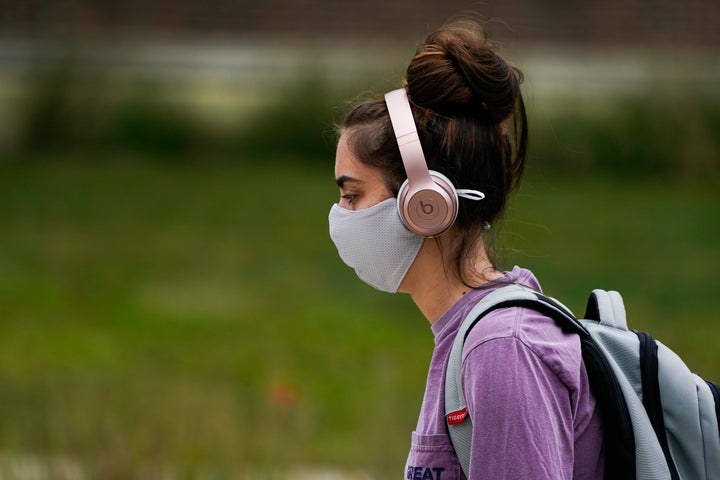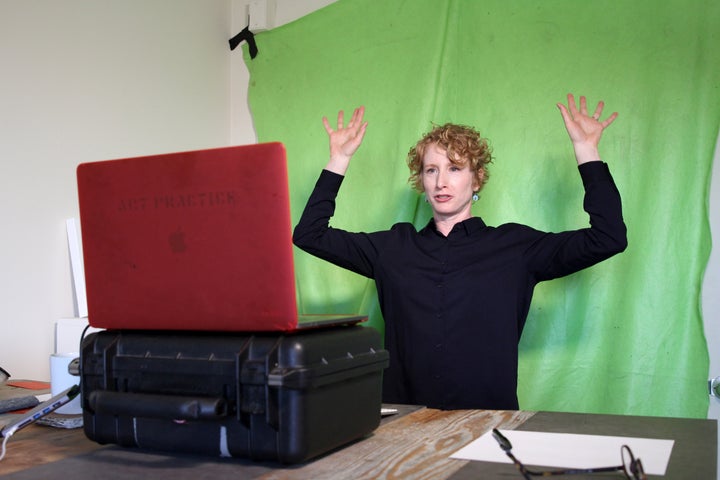
Akshay, a second-year Operations Research graduate student at Northeastern University, sleeps for 6-7 hours during the day on Mondays and Wednesdays so that he can stay up for his classes which often start at midnight and go on till 7 AM in the morning. Like many Indian students enrolled in American universities, he left the US earlier this year as campuses started to close down abruptly and the Covid-19 situation worsened in Boston, Massachusetts.
“Last week, I attended a 3 AM lecture and I was half asleep,” said Akshay, who’s currently in Mumbai. “It is very difficult, of course.”
Saachi Khandpur, a third-year politics and psychology major at Mount Holyoke College, has classes five days a week that she attends from New Delhi—three of them go past midnight. For three weeks, she tried sleeping during the day and attending classes at night but had to stop after she started getting sick.
“Now I am choosing between whether I want to follow a normal schedule, not feeling sick and getting some quality time with my family or if I want to be able to participate at my optimal potential in class, and it is a hard choice,” she added.
Many Indian students such as Akshay and Saachi decided to take online classes instead of going back to the US for the Fall 2020 semester, as Covid-19 cases continue to escalate in both India and the US. International flights are limited and expensive, and classes remain virtual for most universities and colleges. For some students, lack of campus jobs and summer internships falling through because of the pandemic was also a major consideration in moving back for the summer.
“I wanted to go back even before July because the job situation was not great, my lease was ending in August and if I left I would get to stay with my family for 4-5 months rather than being alone at this time,” said Akshay.
The New York Times reports that there have been more than 88,000 coronavirus cases in US colleges and universities since the outbreak—over 150 colleges have reported at least 100 cases each. For the new semester in Fall 2020, most colleges decided to offer online classes to students.

Some universities and colleges decided to reopen with in-person classes and make safety protocols such as masks, social distancing and frequent testing mandatory. However, after being unable to stem the rapid spread of coronavirus on campuses, universities like James Madison University, University of North Carolina at Chapel Hill, Notre Dame and a few others, have already moved their classes back online.
Online classes for foreign students have their own drawbacks though—limited access to resources like high-speed internet and textbooks, large time differences for classes, and limited social interaction with teachers and peers. Aditi Parashar, 20, a Psychology major at Mount Holyoke College, decided to leave for New Delhi as cases started rising in the US, the campus housing she was staying in closed down and her parents started worrying.
“It is an adjustment. You are very conscious because you can see yourself also while you can see everyone else,” Aditi said about her experience after taking virtual classes on video conferencing apps like Zoom for nearly a month.
“By the time you have your 12 AM class, your brain has checked out. My classes are really interesting and I shouldn’t be holding my head in my hands,” she said. “But this only gets exacerbated the longer the class. You are yawning, rubbing your eyes, and everyone can see you.”
Similarly, Jaskirath Panjrath, a second-year Communications Design major at the Parsons School of Design, finds that things are very busy, especially when confined in a four-walled space with classes till 3 AM.
“It is difficult if you are bad at concentrating. The classroom experience is very collective but remote learning is very individualistic, ” said Panjrath about his experience. “It is very uncomfortable, like a chair that you would not want to sit on.”
Aneesa, a peer academic advisor at the University of Massachusetts Boston, has observed that students, particularly foreign students, are having trouble accessing resources such as textbooks and technology, both software and hardware. Some students cannot access university resources due to firewall and privacy restrictions in their home country. Others are struggling with access to virtual learning due to shaky internet connections and power cuts.
“My internet connection is great but your electricity goes out at random times in the summer in India. There is also a lot of construction happening in my neighborhood.” said Aditi. “It has already happened once in class, where I started panicking and my parents suggested I email the professor. My professors understand but it is difficult to grasp the theories if you miss the class.”
Randy Albelda, Professor of Economics at University of Massachusetts for over two decades, has noticed that her class looks very different this year: “Some students are more affected by Covid-19 than the other. I think we are getting students who are better able to do these classes, so ones who are more financially stable and have a better living situation. There will be more inequality after this is over.”
Professors are trying their best to accommodate students by recording classes and following a variation of synchronous and asynchronous classes. A foreign student in Albelda’s class is struggling with time zones and online censorship in China and the professor has been recording videos and voice threads to send to the student. With virtual teaching, instructors are also struggling with ways to keep students engaged.
“A third don’t show their face, so how do I know that they are there? Even if they have their cameras on, I can only see 3-4 faces when I am presenting, so I don’t know if they are understanding,” said Professor Albelda. “Not having visual cues is hard, particularly because as a teacher you want to connect.”
It has also led to additional workload for professors. Like Professor Albelda, Professor Sripad Motiram, Associate Professor in the Department of Economics at UMB, also finds that his time spent teaching and preparing for classes has increased greatly with virtual classes.
“I enjoy teaching and I like meeting students and interacting with them, something not very easy to do virtually. You end up doing more work but you are getting less fulfilment from it,” he added.
“I have a visual problem and teaching online really stresses my eyes. Like students, the impact of Covid-19 has also been disproportionate on some teachers, like those who had to suddenly adjust to this new technology or female academics who were already doing a disproportionate amount of household work,” he said.
Many students like Sakshi have also lost their on-campus jobs because of being away from college. The college told her that they couldn’t keep her on because it would be difficult to comply with both Indian and American occupational laws while she was in India.
“I am on hefty financial aid. This is stressful for me because I will have expenses the minute I land in the US,” she said. “I have some savings but I am worried that might not be enough unless I start earning the minute I get back on campus.”
Aditi and Sakshi’s university have divided their semester system into two modules where students take two classes in the first half and two classes in the later half, rather than taking all four classes in one go. While this means that they have to stay up late for fewer classes, their current classes feel rushed. Class material that was once spread out over 14 weeks is now compressed into 7.5 weeks. Coordinating group projects is another major hurdle.
“Group work is becoming an issue. For one of my classes, most of my group is in the US while I am in a different time zone so I did end up missing one of our meetings.” said Aditi. “It is hard to sync timings when everyone is in a different time zone.”
Covid-19 and the ensuing shift to virtual schooling, has also limited social interaction amongst students and the communities they built around their colleges.
Saachi Khandpur said she was unable to take part in campus organisations due to the time difference.
“I am part of the FAMILIA, an LGBTQ+ and people of colour organisation on campus. It was my family away from home and that’s one community I miss a lot,” she said. “Now that I am home, that is something I miss talking about. One of the clubs emailed me that they are meeting today, but they are meeting at 3 AM, and I don’t know if I should stay up.”